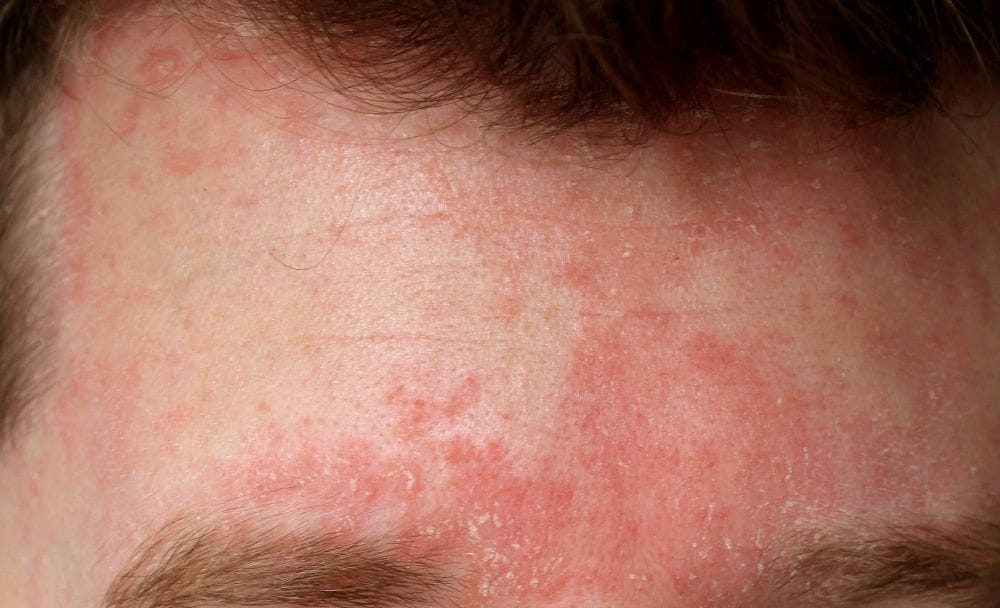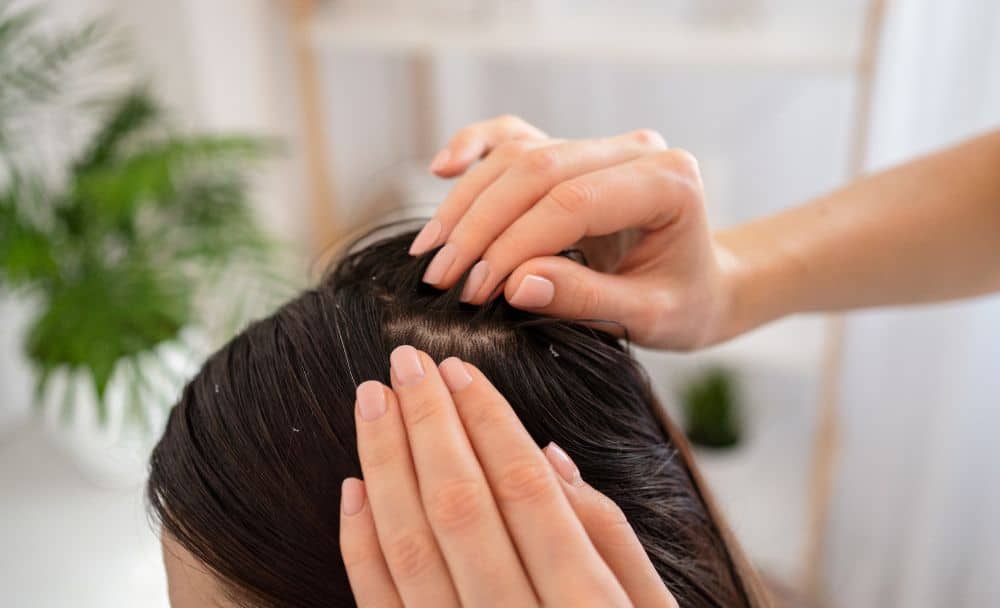Seborrheic dermatitis is a common skin condition that affects millions of people worldwide. It is characterized by red, itchy, and flaky patches on the skin, typically occurring on the scalp, face, and other areas rich in oil glands. [1] [2] In this article, we will explore the causes, symptoms, diagnosis, and treatment options for seborrheic dermatitis.
What is Seborrheic Dermatitis?
Seborrheic dermatitis, also known as seborrhea, is a chronic inflammatory skin disorder. It primarily affects areas of the body where sebaceous glands are most active, such as the scalp, face, and chest. The exact cause of seborrheic dermatitis is unknown, but it is believed to be a combination of genetic, environmental, and hormonal factors. [1] [2]
Causes of Seborrheic Dermatitis:
Several factors contribute to the development of seborrheic dermatitis. These include:
Malassezia
A type of yeast that normally resides on the skin and feeds on the oils produced by sebaceous glands. An overgrowth of Malassezia can trigger an inflammatory response, leading to seborrheic dermatitis.[1] [2]
Hormonal factors
Hormonal imbalances, such as those occurring during puberty, pregnancy, or certain medical conditions, may increase the risk of developing seborrheic dermatitis.
Genetic predisposition: There is evidence to suggest that certain individuals may have a genetic predisposition to seborrheic dermatitis.
Environmental factors: Cold, dry weather, stress, and certain lifestyle habits may exacerbate seborrheic dermatitis symptoms. [1] [2]
Imbalance of Doshas
In Ayurveda, the condition of Seborrheic Dermatitis can be correlated with Darunaka, which is considered a scalp disorder (kapalagata roga). It is believed that excessive exposure to etiological factors such as the consumption of unwholesome food, oily and fried food, among others, leads to the vitiation of the kapha and vata doshas. As a result, these vitiated doshas contaminate the rakta (blood), twak (skin), mamsa (muscles), and ambu (bodily fluids), giving rise to symptoms such as itching of the scalp, hair fall, dryness of the scalp, and cracking of the scalp skin. [3]
Symptoms of Seborrheic Dermatitis
The symptoms of seborrheic dermatitis can vary from mild to severe and may include:
- Red, inflamed skin
- Greasy or oily appearance
- Itching or burning sensation
- Flaky or scaly patches
- Yellow or white crusts
- Hair loss in severe cases
- Loss of eyebrows, eyelashes, or beard in some individuals
Diagnosis of Seborrheic Dermatitis
Seborrheic dermatitis is typically diagnosed based on a physical examination of the affected skin and the presenting symptoms. In some cases, a skin biopsy may be performed to rule out other conditions with similar symptoms. Dermatologists are specialized doctors who can accurately diagnose seborrheic dermatitis and provide appropriate treatment recommendations. [4]
Treatment Options for Seborrheic Dermatitis
While there is no cure for seborrheic dermatitis, several treatment options can effectively manage the symptoms. These include:
Topical corticosteroids
These anti-inflammatory creams or lotions can help reduce redness and itching associated with seborrheic dermatitis. However, prolonged use should be avoided due to potential side effects. [5]
Antifungal medications
If an overgrowth of Malassezia is suspected, antifungal creams or shampoos containing ingredients like ketoconazole or selenium sulfide may be prescribed to control the yeast population on the skin.[2]
Topical calcineurin inhibitors
These medications, such as tacrolimus or pimecrolimus, can be used as alternatives to corticosteroids, especially in sensitive areas like the face or genitals. [6]
Medicated shampoos
Specialized shampoos containing ingredients like coal tar, zinc pyrithione, or salicylic acid can effectively reduce scalp symptoms. Regular use can help control flaking and itching. [7]
Lifestyle modifications
Practising good hygiene, avoiding harsh soaps or skincare products, and keeping the affected areas clean and dry can help manage seborrheic dermatitis symptoms.
Moisturisers
Using gentle moisturizers can help soothe dry and flaky skin associated with seborrheic dermatitis. Look for products that are non-comedogenic and specifically formulated for sensitive skin.
Phototherapy
In some cases, exposure to certain types of light, such as ultraviolet (UV) light, can be beneficial in managing seborrheic dermatitis symptoms. Phototherapy sessions under medical supervision may be recommended. [8]
Stress management
Stress has been known to worsen seborrheic dermatitis symptoms in some individuals. Engaging in stress-reducing activities such as yoga, meditation, or exercise can help minimize flare-ups.
Dietary considerations
While the direct impact of diet on seborrheic dermatitis is not well-established, some individuals report improvements in symptoms by avoiding trigger foods such as dairy products, spicy foods, or alcohol. It may be worth exploring dietary modifications in consultation with a healthcare professional.
Home Remedies and Self-Care
In addition to medical treatments, there are several self-care measures and home remedies that can provide relief from seborrheic dermatitis symptoms. These include:
- Regularly washing the affected areas with a gentle cleanser and warm water.
- Gently massaging the scalp to remove scales and flakes before shampooing.
- Avoiding excessive scratching or picking at the affected areas to prevent further irritation and potential infection.
- Applying natural remedies like aloe vera gel, coconut oil, or tea tree oil to the affected areas to soothe inflammation and moisturize the skin.
- Consuming medication or juices containing ingredients like Amalaki, Aloe Vera and Bhringraj can also be helpful. Products containing these ingredients and other products for improving skin health can be found in the Zandu Care Store.
However, it is important to note that individual responses to home remedies may vary, and it is advisable to consult a healthcare professional before trying them.
FAQs
1. Is seborrheic dermatitis contagious?
No, seborrheic dermatitis is not contagious. It is a non-infectious condition that cannot be spread from person to person.
2. Who is at risk of developing seborrheic dermatitis?
Seborrheic dermatitis can affect individuals of all ages, but certain factors may increase the risk. These include a family history of the condition, hormonal changes during puberty or pregnancy, stress, certain medical conditions (such as Parkinson’s disease or HIV/AIDS), and cold, dry weather.
3. Can seborrheic dermatitis be cured?
Seborrheic dermatitis cannot be completely cured, but its symptoms can be managed effectively with appropriate treatment and lifestyle modifications.
4. Can seborrheic dermatitis be prevented?
While it may not be possible to prevent seborrheic dermatitis entirely, certain measures can help reduce the risk of flare-ups. These include practising good hygiene, avoiding harsh skincare products, managing stress levels, and avoiding known triggers such as extreme weather conditions or certain dietary factors.
5. Can seborrheic dermatitis lead to hair loss?
In severe cases, seborrheic dermatitis can cause temporary hair loss. However, with proper treatment and management, the hair usually regrows once the condition is under control.
Conclusion
Seborrheic dermatitis is a common chronic skin condition that can cause significant discomfort and distress. While the exact cause remains unclear, a combination of genetic, environmental, and hormonal factors contributes to its development. Prompt diagnosis and appropriate treatment are crucial in managing symptoms and preventing complications. If you suspect you have seborrheic dermatitis, it is recommended to consult a dermatologist who can provide a comprehensive evaluation and recommend an individualized treatment plan. With proper care, most individuals with seborrheic dermatitis can effectively manage their symptoms and improve their quality of life.
Disclaimer: This Article is for informative purposes only and does not constitute medical advice. Kindly contact a medical professional before attempting any treatments mentioned in the article yourself.
References:
- Seborrheic Dermatitis – PMC (nih.gov)
- Seborrheic dermatitis – A. K. Gupta, R Bluhm – 2004 – Journal of the European Academy of Dermatology and Venereology – Wiley Online Library
- An Ayurvedic Approach in the Management of Darunaka (Seborrhoeic Dermatitis): A Case Study (ijhsr.org)
- Seborrheic dermatitis: Signs and symptoms (aad.org)
- Adult Seborrheic Dermatitis – PMC (nih.gov)
- Role of topical calcineurin inhibitors in the treatment of seborrheic dermatitis: a review of pathophysiology, safety, and efficacy – PubMed (nih.gov)
- Treatment of seborrheic dermatitis: a comprehensive review: Journal of Dermatological Treatment: Vol 30, No 2 (tandfonline.com)
- Narrow‐band ultraviolet B (TL‐01) phototherapy is an effective and safe treatment option for patients with severe seborrhoeic dermatitis | British Journal of Dermatology | Oxford Academic (oup.com)



















